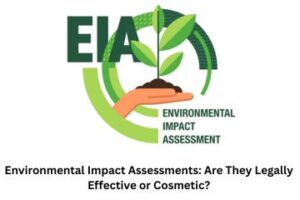Limits to Freedom of Speech and Expression in India: A Socio-Legal Analysis
In the world’s largest democracy, India, the right to freedom of speech and expression stands as a fundamental liberty, enshrined under Article 19(1)(a) of the Constitution. However, this right is not absolute and comes with its set of restrictions aimed at maintaining public order, respecting the rights of others, and ensuring national security. This article delves into the socio-legal landscape of India to understand the contours of this freedom and its limitations, providing a comprehensive analysis of the balance between individual liberties and societal needs.
The Constitutional Framework
The Constitution of India, while guaranteeing freedom of speech and expression, also allows for certain restrictions under Article 19(2). These include considerations for the sovereignty and integrity of India, the security of the state, friendly relations with foreign states, public order, decency or morality, contempt of court, defamation, or incitement to an offense. This dual framework underscores the Indian approach to freedom of speech: a liberty that is fundamental yet not unfettered.
The Socio-Legal Context
India’s diverse socio-cultural fabric necessitates a nuanced approach to free speech. The plurality of religions, languages, and ethnicities, while being a source of rich diversity, also poses unique challenges in maintaining communal harmony and public order. Consequently, the legal system in India has evolved to place certain restrictions on free speech to prevent hate speech, communal violence, and other societal disruptions.
Key Legal Provisions and Judicial Interpretations
Several legal provisions delineate the boundaries of free speech in India. The Indian Penal Code (IPC), for instance, contains sections on defamation (Section 499), speech that can cause enmity between different groups (Section 153A), and speech that can incite violence or public disorder (Section 505). Moreover, laws like the Information Technology (IT) Act address newer forms of expression in the digital age, regulating online speech to prevent cyber crimes, including cyberbullying and defamation.
Judicial interpretations have further shaped the understanding of free speech limits in India. Landmark Supreme Court judgments have often balanced free speech with other public interests. For instance, the Supreme Court’s ruling in the case of Shreya Singhal vs. Union of India (2015) struck down Section 66A of the IT Act, which was criticized for chilling free speech online, as unconstitutional. Such decisions highlight the judiciary’s role in protecting free speech while recognizing its boundaries.
Societal Concerns and Free Speech
The Indian society’s concerns about offensive speech, particularly in the realm of religion and morality, have led to debates on censorship and the role of the state in regulating content. Films, books, and art that are perceived to hurt religious sentiments or moral values often face calls for bans. This tension between artistic expression and societal values underlines the complex terrain of free speech in India.
Challenges in the Digital Era
The advent of social media and digital platforms has amplified the challenges of regulating free speech. Issues of fake news, online harassment, and hate speech have prompted the government to introduce new regulations, such as the Digital Information Security in Healthcare Act (DISHA), aimed at curbing misinformation and protecting digital data. However, these measures have also raised concerns about potential overreach and infringement on privacy and free speech.
Conclusion: Striking a Balance
The limits to freedom of speech and expression in India represent an ongoing effort to balance individual rights with collective societal interests. While the legal framework seeks to protect the integrity of diverse communities and maintain public order, it also raises critical questions about censorship, state control, and the right to dissent. As India continues to navigate its socio-legal complexities, the challenge lies in ensuring that restrictions on free speech are not only necessary but also proportionate, preserving the essence of democracy while fostering a respectful and inclusive public discourse.




